photography course
Do You Feel Like Richard Avedon?
20/05/13 10:20 Filed in: Photography & Art
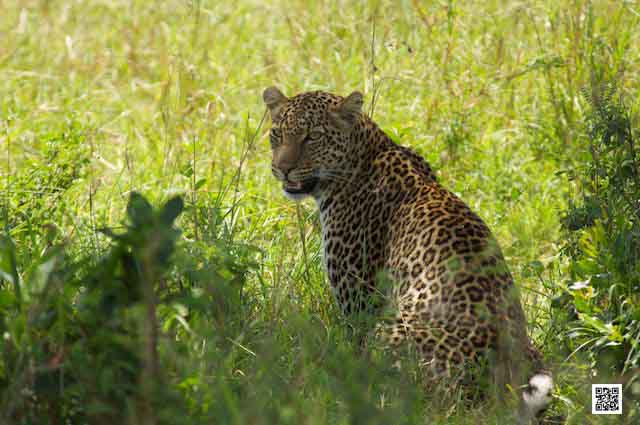
Richard Avedon, one of the greatest photographers of the 20th century and worldwide known for his provocative fashion photography and minimalistic portraits said this:
“And if a day goes by without my doing something related to photography, it’s as though I’ve neglected something essential to my existence, as though I had forgotten to wake up. I know that the accident of my being a photographer has made my life possible.”
Does that sound familiar to you or has photography not quite such a place in your life or are you just not conscious about it? Isn’t photography not what we do constantly without even noticing anymore? Often heard comments and thoughts of guests on photographic safari, team building photographic safaris or during wildlife photography courses are resolutions to do more photography when they are back home, to buy new equipment, to follow courses or even to start reading the manual. But just as often not much happens when they are back home. The daily challenges get hold of them and reading the manual of the camera is the last thing they want to do, but does photography need resolutions?
Don’t make it to heavy, sounding like work. Photography is light and fun and you learn the most by doing it. So just remember you have a cell phone, that enables you to shoot away wherever you are and photography becomes part of your daily life like weaking up in the morning.
Happy snapping!
Ute Sonnenberg for www.rohoyachui.com
On Photo Safari: The Speed of Memory Cards
09/03/13 10:54 Filed in: Photo Safari

When new cameras are announced, the speed in frames per second is one of the very interesting features. We want a camera to be fast to capture animals in motion. Nothing is more frustrating on a photographic safari than pressing the shutter and nothing happens. Sometimes the missing focus is the reason, but often it is the speed. And very often it is not even the camera that slows down the process; it’s the memory card. You can have a fast camera, but it will not be able to use its entire abilities when the memory card is to slow in processing the images. Then you see the message “buffering” and the lion kill is just happening in front of you.
Be conscious about that when purchasing memory cards. Always ask what card suits best the abilities of the camera. When you are attending photography courses make it a topic to understand better what memory card to use when and for which camera. It will make you a happier photographer, shooting away at great sightings in the bush and elsewhere.
Happy snapping!
Ute Sonnenberg for www.rohoyachui.com
On Photo Safari: Sunset and Sunrise
23/02/13 11:53 Filed in: Photo Safari | Photography & Art

The moment the sun appears on the horizon and the moment the sun disappears on the horizon are magical moments of a photographic safari. Sunrise and sunset are the moments we love to capture, but sometimes they are also the moments that frustrate us the most when the image is not what we wanted it to be.
Photography courses teach us about contrasts and that we need them for great images and that applies to sunrises and sunsets as well. The best sunsets and sunrises are the ones with clouds. The sun (the light) needs something to shine on to be seen and clouds are ideal. They become the carrier of the sunlight and the light can display its amazing colors that make the event so mesmerizing.
Another great “tool” to create a beautiful sunset photo are trees. That makes photographic safaris in the Masai Mara so fascinating with their single umbrella trees dotted over the Great Plains. The sun setting behind such a tree is just amazing.
But what works in the bush works also at home. No matter if you are in a big city or in the countryside, choose a spot where the sun can shine on something, a cloud, a tree, a building, a person or on water. As long as there is a medium to carry the light, you can create great pictures.
Seeing it already in front of you? Try it and enjoy the magical moment.
Ute Sonnenberg for www.rohoyachui.com
How to Use Intuition in Photography
21/02/13 12:53 Filed in: Photography & Art

It is most likely an open door to say that intuition is the heart of photography, but it’s sometimes good to have a reminder.
Where the ones are who easily enjoy intuition and photographic heights there are also the others who get lost in technical details. Not that the technical side of photography does not involve intuition, but it is mostly the arty part that requires it for compositions with light.
Photography courses pay attention to composition and working with light, explaining the rule of thirds, but might not explicitly mention the important role of intuition in this process or just assume that photographers are using it anyway, which is partly true. So, how can a photographer consciously utilize intuition to create great images? Very simple, by following the light. The light does not only determine the camera settings it also creates the compositions. And if you struggle seeing compositions just look out for the light, what it’s pointing out for you and right there it is, the composition you were looking for.
One might think, but this is just looking for the light and got nothing to do with intuition, but this is not quite true. Intuitively we are looking for the light and it goes wrong with our images when we try to ignore what the intuition is telling us. Imagine you are out in the bush on photo safari. It is about 9 am and the best light is already gone. Now the light is bright and harsh. You remember what you learned and you try to photograph with the light, but your images look dull. Suddenly you have the feeling to turn around and photograph into the light and yes, there are still contrasts and your images look much better. So, most likely not consciously you followed a feeling triggered by the light and you got it working. And this is just one small example how intuition can make a day photographing in the bush a great one.
Inspired? Try it and enjoy snapping!
Ute Sonnenberg for www.rohoyachui.com
How Your Camera is Your Grounding
20/02/13 12:52 Filed in: Photography & Art

It might sound a bit spiritual when talking about grounding, but well photography is something that takes you to high spirits and in order to not get lost up there, grounding is very important.
Do you know of these moments of frustration when you tried to photograph something and your camera didn’t do what you thought it should do? In those moments unfortunately very often not the camera is the problem, but the photographer. Your camera only brings you back into reality and tells you that it needs light to see and focus, just as your eyes, but you had just forgotten, because it looked so great.
Your camera gear makes sure you stay in touch with the reality of the environment you are shooting in. It tells you through the images what’s going on and even includes advise what to do to make it work. One just got to see and listen. Well that sounds easy, but it is not. You got to know your camera to understand what it’s telling you. So a photography course with the basics can do no harm. Better to learn how to operate your camera at home than missing great shots while traveling or when being on photographic safaris. Imagine a lion kill and you don’t get it right.
Ground yourself in photography and learn about your camera. A good grounding is the solid base for soring in photographic heights.
Happy snapping!
Ute Sonnenberg for www.rohoyachui.com
Carl Zeiss Lenses - A Treasure Passed On
12/02/13 09:24 Filed in: Photography & Art

Carl Zeiss Jena, this magical company of incredible camera lenses in the middle of Germany, surrounded by beautiful forests and touched by the arty spirit of Weimar, where Geothe, Schiller, Liszt and Bauhaus had their home. Their lenses must be magic.
And they are. One of the very famous camera lenses made by Carl Zeiss is the famous Planar 50mm f/0.7, used by Stanley Kubrick in Barry Lyndon, designed by Dr. Erhard Glatzel. Dr. Glatzel passed away and his grandson inherited his camera bag, with a content no camera bag in the world has and with a big surprise.
There where suddenly two lenses that nobody knew about, the Distagon 25mm f/1.4 and the Distagon 18mm f/2.8. They are prototypes and never went into production. Example images can be seen on the original forum post and images of more lenses are available via PetaPixel.
Well, the lenses are not very practical on photo safari, but it would be just amazing to work with them during photography courses to see their magnificent qualities in the challenging light of the bush. Maybe one day the grandson will take them there to give it a try, who knows.
Anyway, its great that there are still surprises in camera gear and special lenses evolve from somewhere.
Keep enjoying photography and maybe have a look into old boxes on the attic, a surprise could be waiting there for you.
Happy snapping!
Ute Sonnenberg for www.rohoyachui.com
ePhoto Book: Leopard Land
10/02/13 09:18 Filed in: Photography & Art
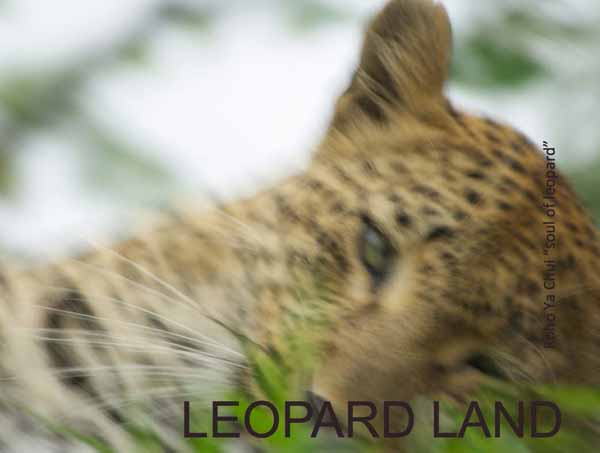
It is a place like in a fairy tail, yet it is real, leopard land. This place in the South African bush is heaven for photographers, wildlife lovers and an ideal destination for photographic safaris.
Curious? Have a look here.
Ute Sonnenberg for www.rohoyachui.com
On Photo Safari: The Beanbag
09/02/13 09:17 Filed in: Photo Tips

The beanbag is an item made of fabric, looking like a small pillowcase, and is filled with beans, at least it was.
Nowadays beanbags can be filled with rice or lighter synthetic fillings and can have several shapes. There are beanbags that stay nicely on the sill of car windows on metal bars in safari vehicles or on the knee of the photographer. They are multifunctional and extremely helpful on photo safari.
We photographers are not able to hold our camera (with or without zoom lens) steady enough to create shake-less images. We need help. For night photography it has to be the tripod, but on photographic safaris the tripod is not very practical. The beanbag is much better. You can put it everywhere, it keeps you completely flexible and mobile and the images will be sharp. Just rest the camera lens on the beanbag and shoot away. Well, we seem to like to have control about our camera and it is always an item during the photography courses that it is difficult for us to let go and trust the beanbag, but we can. The beanbag is doing the job just great. Try it. It works perfectly.
Beanbags can be bought in all sizes and shapes. They are also easy do be made at home from a small pillowcase or a piece of clothe.
Happy beanbagging!
Ute Sonnenberg for www.rohoyachui.com
On Photo Safari: Auto Display
26/01/13 19:47 Filed in: Photo Tips

Have there ever been moments that you were annoyed by the display of your camera, because you couldn’t see anything, especially when it’ sunny?
After photographing we like to look at the display of the camera to see what we did. Well, we know from our photography courses that the display is not the best quality to see the image, but still it should give a good impression of the result.
On one of the photographic safaris one of the guests had a Nikon D800E and he was very angry that he couldn’t see what he did, because the display looked just useless. After playing around in the menu we found that the camera was not to blame, it had an Auto Display feature, meaning that it adjusts the brightness of the screen to the light situation automatically. It turned out that this feature is very useful and works perfectly. The Auto Display feature turned an angry photographer into a very happy photographer.
Check first what your camera can do for you before you get angry at it!
Ute Sonnenberg for www.rohoyachui.com
Camera Oscura - Old Masters and Photographers
24/01/13 08:47 Filed in: Photography & Art
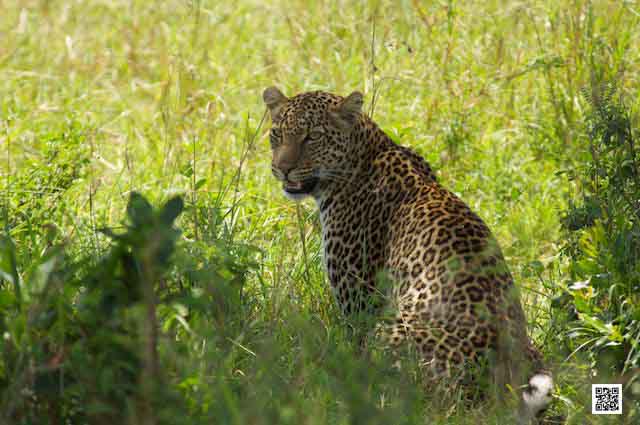
“The camera obscura is an optical device that projects an image of its surroundings on a screen.” (via Wikipedia)
It is thought that old masters like the Dutch painter Johannes Vermeer used it to create their paintings. British artist and art historian David Hockney did intensive research on the subject and concludes that the great masterpieces were created with the help of optics and lenses. (read the article on PetaPixel)
Knowing this doesn’t make their work less amazing. One can use optics and lenses and still doesn’t know anything about composition and light. One needs to be able to see first and that explains even more why a photographer can learn composition from looking at their masterpieces. They used photography tools the same way photographers are creating their compositions nowadays. So, going to a museum and looking at the old masters is a great photography lesson. Do the Louvre and you have a whole photography course, add a photographic safari and an intensive course in natural light will finish it up. And as a result your photographs are paintings with light, maybe even masterpieces of light and composition. You actually learned from old masters.
Surprising? Check it out. You can also visit the Louvre online. Here the link: Louvre.
Ute Sonnenberg for www.rohoyachui.com
What is Success in Photography?
23/01/13 08:06 Filed in: Photography & Art

“As a self-taught filmmaker who spent the last year trying to get his first real project up and running , I've come across my fair share of disappointments, near misses, and financially tight times. As with any startup or personal project, finances are scarce and it's often your passion for the project and support from family and friends that carries it through. For all entrepreneurs (especially those on the artistic side, like me), creating something of your own isn't about making money--it's about being successful in the way that you personally define it.” (from article by Kerrin Sheldon)
Kerrin Sheldon’s definition of success is doing something that you love. In his case its filmmaking and it applies just as well to many photographers. Some are self-taught photographers, others did several photography courses or studied photography, yet it’s the passion and love for photography that connects them. They succeed in doing what they love to do and that makes them happy.
And isn’t happiness what we are looking for in life? Well, maybe a new camera or two contributes to happiness too, but the love and passion are the real fun.
Happy snapping!
Ute Sonnenberg for www.rohoyachui.com
A Story of Disruptive Innovation and Photography
22/01/13 16:59 Filed in: Insights & Opinion | Photography & Art
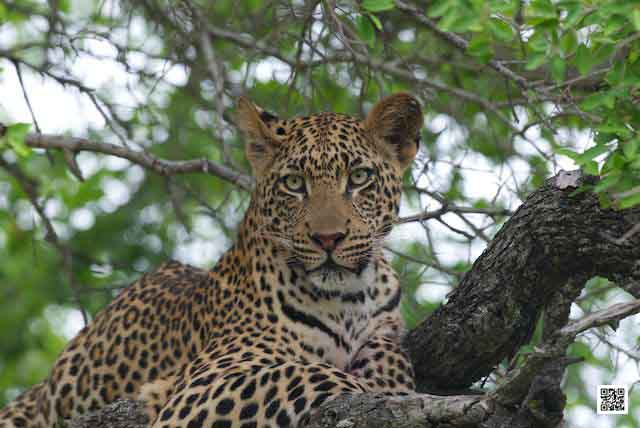
Good ideas often come while we are doing something very boring like driving on the freeway, washing the dishes, doing ironing or other monotone work. We get in some kind of a trance and our thoughts start wandering away and sometimes to places where ideas wait to be discovered. Our mind gets somehow switched off and the intuitive level takes over. In other words our usual thoughts are put to sleep.
Now we got this amazing idea, we quickly finish the dishes and go straight behind the computer to work the whole thing out for implementation into practice. Lets say the idea is a new kind of team building that uses photography to align the energies of the individual team members in order to accomplish the team goals. This might sound complicated, but it is not, its only photography and it will feel like a normal photography course, only the results will be more beneficial for the team. Lets call it an innovative application of photography for business.
How do others experience this innovation? Some will see immediately the fun of photography and will be curious to discover new exciting things. Others might be skeptical and might feel a bit uncomfortable, not knowing how the whole thing will work. For them it might feel disruptive, different from the usual team building they always had and reluctance might creep up, tempted to reject the innovative approach of the team building.
What will win, the reluctance or even rejection or the curiosity, fun and excitement? This is the moment when leadership is needed. At the end the leader guides the team to new success and sometimes something has to disrupt the routine to achieve new levels of achievements.
Another example: Who remembers the Reebok Pump? Here what happened when the innovation was introduced to the responsible people:
“When Continuum pitched an idea to Reebok for a new basketball shoe that would use inflated air to better support the ankle, thereby reducing injuries, the brand manager for basketball shoes said he wasn’t interested because he had never heard about a need for that from a focus group. When we proposed the idea to a high school basketball team, the response was even worse--the players openly laughed at the concept.
But when the team members actually used an early “experiential model” of the shoe during practice, they were won over by how cool it was to have a shoe form-fitted to their feet. Over time, they were even more enthusiastic as they realized they could play more confidently without fear of injury. Like that, the Reebok Pump was born.” (via Co.Create, read the article here)
The Reebok Pump could be called a disruptive innovation. It obviously disrupted the usual thinking and doing, yet when eventually tested all were happy.
There are plenty of examples like the Reebok Pump, also in art and photography. People disliked the painting style of Van Gogh. It was different from the style of other successful painters at this time and Van Gogh’s style might have been experienced as disruptive.
Long story short, disruptive innovation is something revolutionary and photography is a wonderful medium for innovation, within photography and beyond. Use it and be not discouraged when some people might feel disturbed. You might be a new Van Gogh or Rembrandt!
Keep snapping!
Ute Sonnenberg for www.rohoyachui.com
How to Learn from Sting
21/01/13 15:17 Filed in: Photography & Art

How do you create albums and photo books? How do you choose an image from a whole lot of photographs? How do you choose a photography course or art class out of the broad spectrum of choices? How do you choose your travel destination for your holiday?
I might sound far fetched to through together photo books, albums, photographs, holidays and photo courses, but they got one thing in common, the question how you start creating or making a choice. It is in essence the same intuitive process no matter if you are creating a photo book, a holiday, choosing a course or a photographic safari, your intuition makes the choice and takes the lead. And this creative process often includes a technique called semantic intuition, a brain storm technique.
Sting said in an interview that the song title comes first and then he writes the song and so do more famous writers as you can read below:
“The oddly named, but extraordinarily powerful technique was invented by Helmut Schlicksupp, an employee of the Battelle Corporation’s office in Germany. Semantic intuition is a word-combination technique where brainstormers name an idea first, and then try to figure out what the new idea might be, given its name. As counterintuitive or even as impossible as this group idea-generating strategy might sound, there’s actually a precedent for it in the creative arts.
It was in an interview with Larry King many years ago that Sting revealed that he will often get a title for a song first, and then he will go ahead and write the song. Neil Simon, in his second autobiography, revealed that he came up with the name for the play The Odd Couple first, and then wrote the play. And legendary screenwriter William Goldman adopted a similar name-it-first creative strategy when he asked his younger daughter what she wanted him to write a story about. She said “a Princess.” Then he asked his older daughter what she would like him to write a story about. She said, “a bride.” He put them together, and we got his novel--and then the movie--The Princess Bride.”
(read full article from Fast Company here)
Does that sound familiar to you? Don’t you have an idea for a photo book first and maybe even the title and then you start choosing the images and layout?
Think about it. Maybe you are very strong in semantic intuition. Use your strength and create amazing art.
Enjoy your intuition!
Ute Sonnenberg for www.rohoyachui.com
ePhoto Book: Contrast - The Light of Darkness
20/01/13 09:48 Filed in: Photography & Art

Photographic safaris bring you to the most beautiful wildlife destinations in Africa. Their beauty is striking and they teach the visitors not only about wildlife and nature, they also teach about light and contrast and sometimes light and contrast are mirrored in what the bush and the animals are experiencing through life and death.
Contrast makes us see and is what makes a photograph striking.
View & download the ephoto book here.
Ute Sonnenberg for www.rohoyachui.com
On Photo Safari: Auto ISO
19/01/13 08:39 Filed in: Photo Safari

From the point and shoot cameras to the professional digital cameras, all have the feature “Auto ISO” and although one might have learned during a photography course how to use the manual ISO settings, one often goes just back to use Auto ISO. It’s just convenient.
And it might work in most of the situations, but not as well when being on a photographic safari. Photographing in the bush is different and the auto settings often fail to match the light conditions there. The Auto ISO often goes too high and the images look washed out. Use in normal bush bright daylight ISO 100 and you will be fine. But keep looking at the light and adjust the ISO manually when the light gets lower. You will see the results are much better. Depending on what manual setting you prefer, rather leave the ISO at 100 and play with the aperture.
Happy playing!
Ute Sonnenberg for www.rohoyachui.com
Take an External Perspective for Better Insight
17/01/13 08:23 Filed in: Insights & Opinion
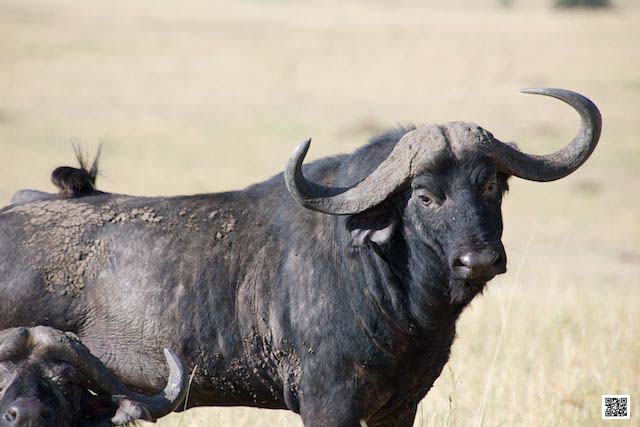
When you visit a museum, where do you stand to look at a painting? Do you stand right in front of the wall, your nose almost touching it or do you stand looking from a distance? Well, if you want to see exactly every brush stroke, you got to come close, but when you want to see the entire masterpiece, you got to watch from a distance.
Talking about an accident is easier when you were witnessing it rather than being involved yourself. You might become emotional while talking when you are one of the victims.
These are two everyday life examples, that having a distance allows a better view on things in their complexity. One can “walk” around a problem or case and see all its aspects from different angles, which result in deeper insights. Innovative leaders will practice that method and photographers do that as well, constantly.
Pretty much every camera has a zoom and if not in the camera, the photographer has most likely a zoom lens. And what are they doing? Zooming in and out constantly to capture the subject the way they experience it, some more closely, others more from a distance. A photographer has always an external perspective and that makes it possible that they can photograph scenes one can hardly look at. Like being a victim of an accident or witnessing an accident, being a witness gives the distance and the insights.
Ute Sonnenberg for www.rohoyachui.com
eBook: How to's Wildlife Photography
13/01/13 23:39 Filed in: Photo Safari | Photo Tips
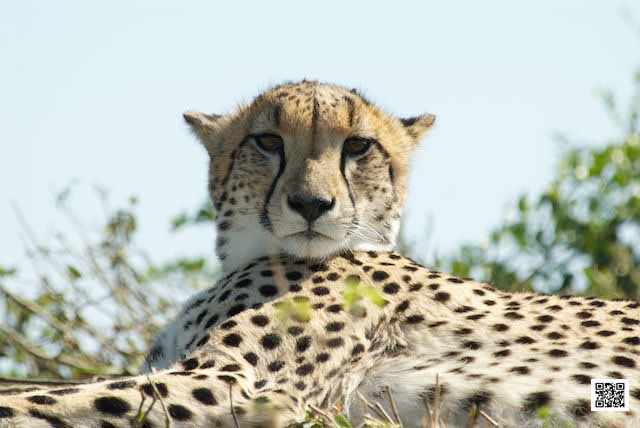
Throughout this blog, posts are scattered with wildlife photography subjects, yet not in a very handy way for the reader to pick them together to read easily.
For those who would like to have them all easy to read in one place, here is the ebook How to’s Wildlife Photography with a selection of blog posts on the subject.
View and download the ebook here.
Happy reading.
Ute Sonnenberg for www.rohoyachui.com